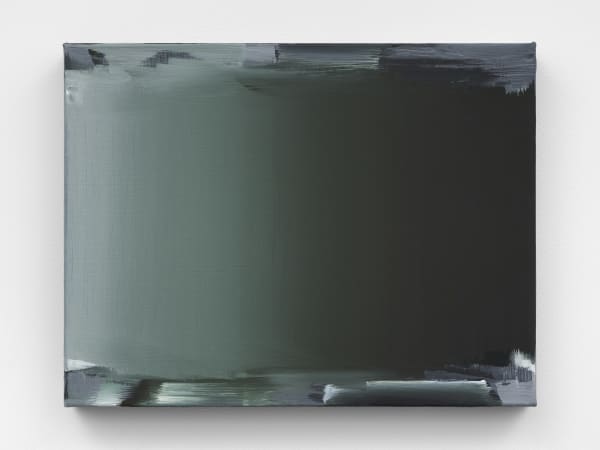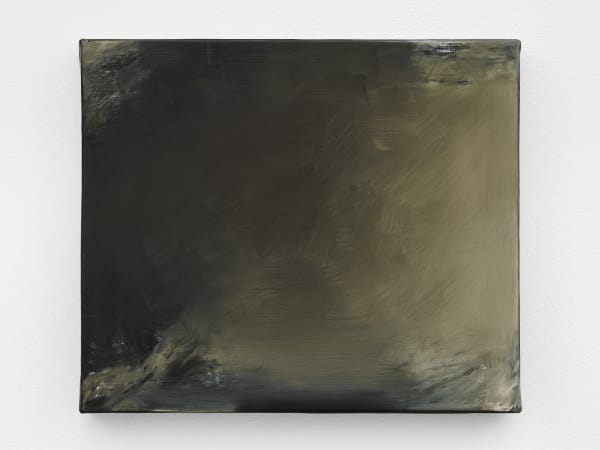COMPRESSING LIGHT: Nancy Haynes
-
介绍
With Compressing Light, Galerie Thomas Schulte presents its first solo exhibition of Nancy Haynes, featuring a selection of small-scale paintings from her ongoing library series (since 2017). Intimate linen canvases of slightly varying dimensions that approximate those of a book, the paintings tend towards the monochromatic, emptied out, yet subtly geometric. In their subtlety, however, they speak volumes.
Titled after writers of influence and importance to Haynes, the paintings in the series unfold like a personal library. We find the names of figures whose work spans generations, disciplines, and genres: among them, Hannah Arendt, Franz Kafka, Ryunosuke Akutagawa, Svetlana Alexievich, and Zora Neale Hurston, to name a few. Alongside such literary figures, other influences are quickly called to mind: for instance, the toned-down, contemplative still-life paintings of Giorgio Morandi, which, though strikingly consistent in appearance, display a masterful rendering of nuance. As we draw in close to study the library paintings, as we read their names, their multiplicity becomes evident: even within the limits of a small canvas and a minimal, muted palette, a vast swath of expression is achieved. Interactions of surface and light change with each iteration, producing distinct movements and varying degrees of luminosity, color and contrast. The surface of each painting is not uniform either: moments of quiet brush up against tumult; flashes of light seem to suddenly recede into darkness; emphatic gestures give way to smooth, spectral transitions. It is not, after all, a single book that the paintings cite, but rather, in essence, an entire body of work—how it is regarded and understood.
Nancy Haynes works in a mostly layered process, through repeated applications of thin coats of paint. The painting’s smoothness is accentuated, as is the density of the paint and its accumulations. This series predominantly consists of shades of black and white, mixing into a variety of grays, as well as mostly earthy greens. She has often worked with lamp black, considered to be the deepest, richest black. Derived from soot, its color is thick as coal. It is a residue, suffused with the passing of time, a distillation of memory. This association extends through her use of sfumato—a technique that is dense with art historical references of its own.
In the luminosity produced by shifts in register, we might think of what Haynes refers to as ‘literary tenebrism’. Light, and how it can be captured in a painted surface, is an ongoing point of fascination for the artist. Though elemental to it, its presence in painting is an illusion. In her works, this potential is activated, as something immaterial that can also give shape to immaterial things—situating light and its illusive capacity within abstract painting. The sfumato that sprawls over, filling the paintings’ center, becomes a particular source of its energy, movement, and dissolution. It echoes the repetitive motions and changing gradations of a scanner, which, pressing light up against a glass from below, brings something to form at the same time as it dematerializes it. Here, light is not only something external, or on the surface, like a reflection on oil paint. It is inner space.
Another comparison that has been made in connection to Haynes’ paintings becomes increasingly relevant: at times, they recall the black, shiny, rectangular screens of digital devices, which likewise make it possible to condense an author’s complete oeuvre into a surface. Similar interactions occur between reflections on top and a glow from within. In some of the paintings, unruly motions that visibly smudge the surface could remind of smeared fingerprints on a touch-screen display. These marks, however ephemeral, hold a personal record of interactions with content that is always in motion: elusive impressions that continuously slide by in swipes and scrolls.
A smooth surface and the liquid character of paint facilitate a flow of movement as if through the slippery substance of the mind. Accumulations and the processing of knowledge, influences, passions, and interests induce shifts over time, as comings and goings outside of a linear progression. Each painting carries a kind of bibliography, alongside the forces of thought and feeling that moved the painter to paint it. They allude to the artist’s memory of their reference material, as well as the very process of its being remembered.
Haynes’ paintings, in effect, take on a processual dimension. Whereas the sfumato comes to embody time itself—illustrating its passage in a conceptual approach that draws inspiration from the work of On Kawara—the paintings’ edges tell a more specific story. Loose strokes in rough horizontal bars at the top and bottom, or disruptions in the paintings’ corners, tentatively frame and compress the gradient in between. For Haynes, these outer limits offer glimpses into the painting’s history: a stratification that reveals the layers of its coming into being, as well as that which is still present underneath, both being brought to light and obscured by its glare.
Encounters with Haynes’ library paintings prompt a meditative process, similar to that of their own development—in the contemplative silence that fills the duration in between drying layers of paint. Time moves and is felt differently. It slows down, condenses, meets the pace of our own thoughts, their manifold wanderings, even gaps, before getting stirred up with the disquiet of emotion. Perpetual transitions and fluctuations, however minute, illuminate a state of impermanence, as though nearly coming into focus and fading away again with the turn of a page.
Text by Julianne Cordray -
安装图示
-
作品
-
Inquire about works in "Compressing Light"

-
参展艺术家















